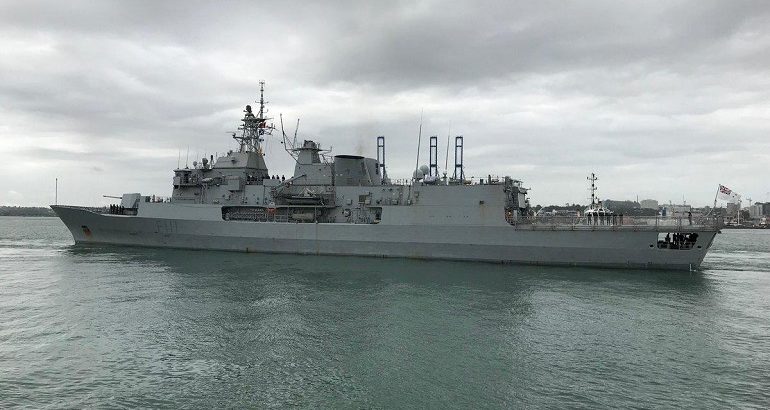HMNZS Te Mana will undergo extensive upgrades to its surveillance, combat and self-defence capabilities. This will allow the vessel to face future threats and address obsolescence of some of the frigate’s current systems.
HMNZS Te Mana is the second of two ANZAC-class frigates of the Royal New Zealand Navy (RNZN). The vessel and her crew are heading north to Hawaii before proceeding to Esquimalt, Canada to commence the upgrade.
As Prime Systems Integrator for the “Frigate Systems Upgrade” program, Lockheed Martin Canada is responsible for designing and supplying the upgraded combat system for the two ANZAC-class Frigate of the RNZN, including a new combat management system – based on Lockheed Martin Canada’s Combat Management System 330 – along with the supply and integration of various sensors, a missile system and a Combat Systems Trainer.
Lockheed Martin Canada is also responsible for the platform design and implementation and has subcontracted Seaspan Victoria Shipyards Co. Ltd in Victoria, BC, to install the new systems on the ship platforms.

MBDA is in charge of providing the Sea Ceptor, active Common Anti-Air Modular Missile (Maritime) – CAMM(M) which will replace the current RIM7P NATO Seasparrow missile system.
Thales is responsible for providing the Broadband Sonar Advanced Processing System (BSAPS) for the Spherion B hull-mounted sonar and the TUUM-6 multi-channel Digital Underwater Communication System (DUWCS).
Airborne Systems Limited is providing anti-ship missile defence soft kill subsystems, along with training and support, spares, support and test equipment.
Ultra Electronics Limited is providing the torpedo defence system, along with training and support spares, support and test equipment, and full documentation.
Northrop Grumman will supply new Inertial Navigation Systems and OSI Maritime Systems will provide a navigation radar system based on two Furuno 3000 series X band radars for each ship.
First ship of the class, HMNZS Te Kaha, arrived in Canada on March 6 2018 for its mid-life upgrade. The entire contract (upgrade of both ships) is expected to be completed in 2020.






